Build Quality
As we already know the SilverStone SX700-G a single 92mm fan design that is similar to the preferred 80mm cooling solution by some brands. The major downside to this fan design is that to move a sufficient volume of air to cool a high output power supply it must spin very fast resulting in elevated noise levels. While these 92mm designs are not great for quiet computing environments the key criteria in our evaluation is whether or not the cooling solution is sufficient, not necessary its sound level or form factor and our comments on such later are not absolute decibel values.
External Build Quality

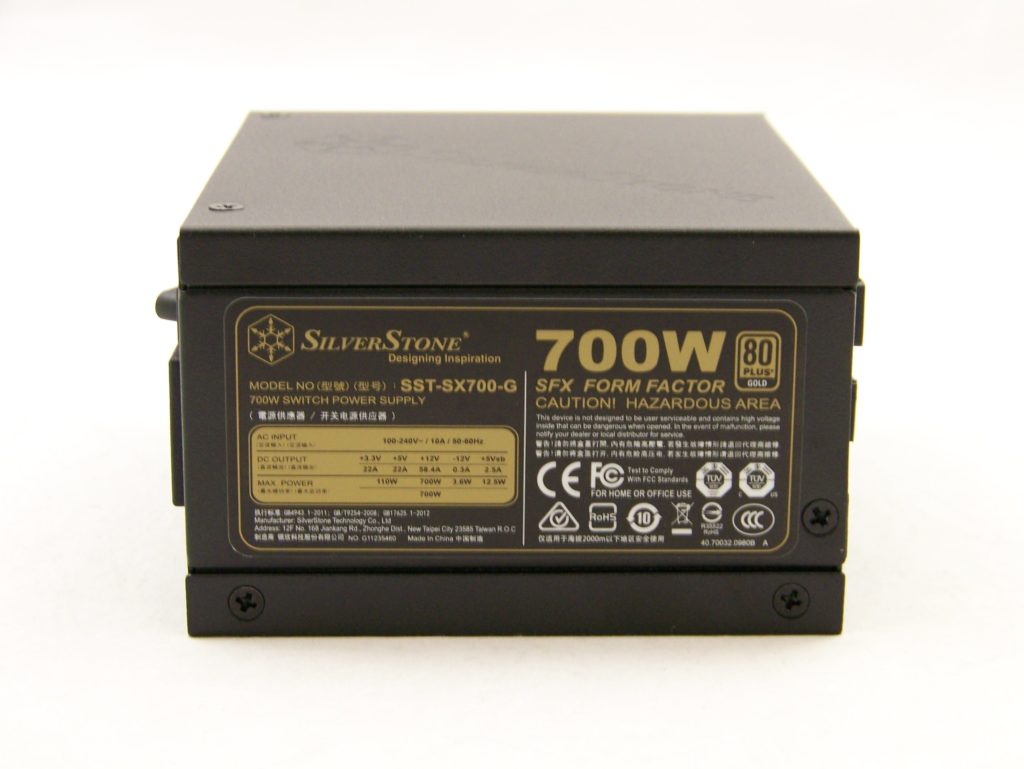


The exterior of the SilverStone SX700-G is just about identical to the rest of the SFX units from SilverStone and this unit is generally well constructed. Cosmetically, the power label that taking up the entire side of the unit is not the best look, but this is a tiny unit. The modular interface is well labeled and there is a pair of blue housing side connectors for the PCIe cables. Rounding things out, the unit has a durable black finish, imprinted SilverStone logo, and an overhead 92mm fan.

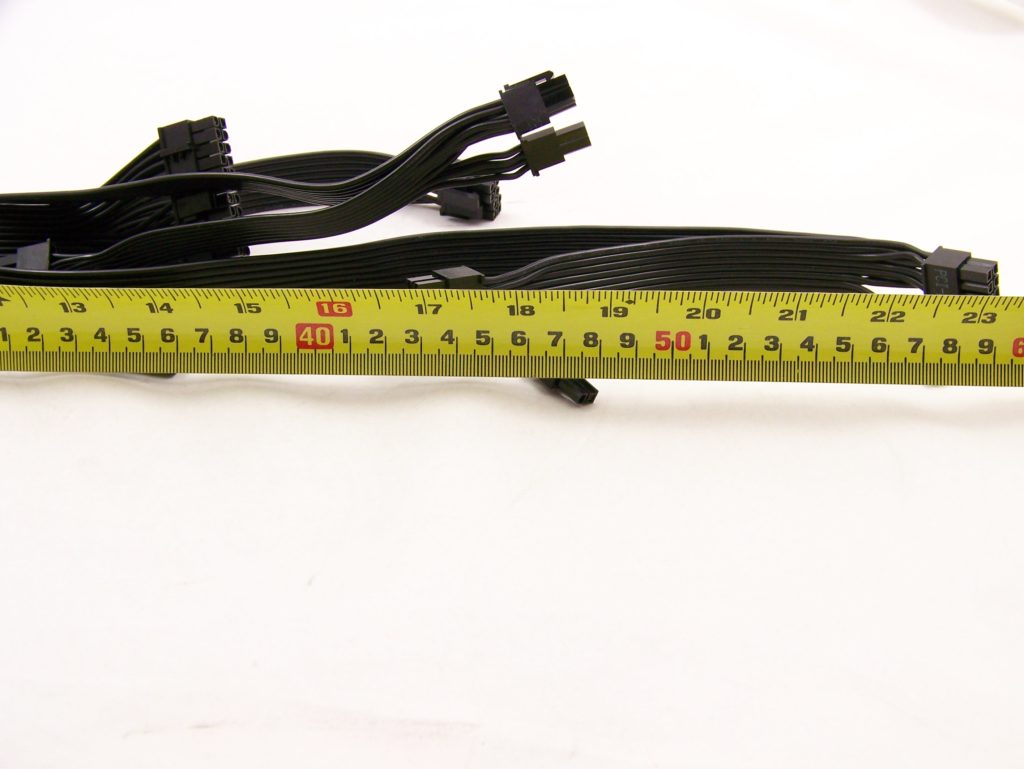
The SilverStone SX700-G comes in at a total length of ~4 inches while the cables come in at a length of ~13″ to 23″ to the first or only connector. Additionally, the cables are all FlexForce style cables which is excellent.
Internal Build Quality
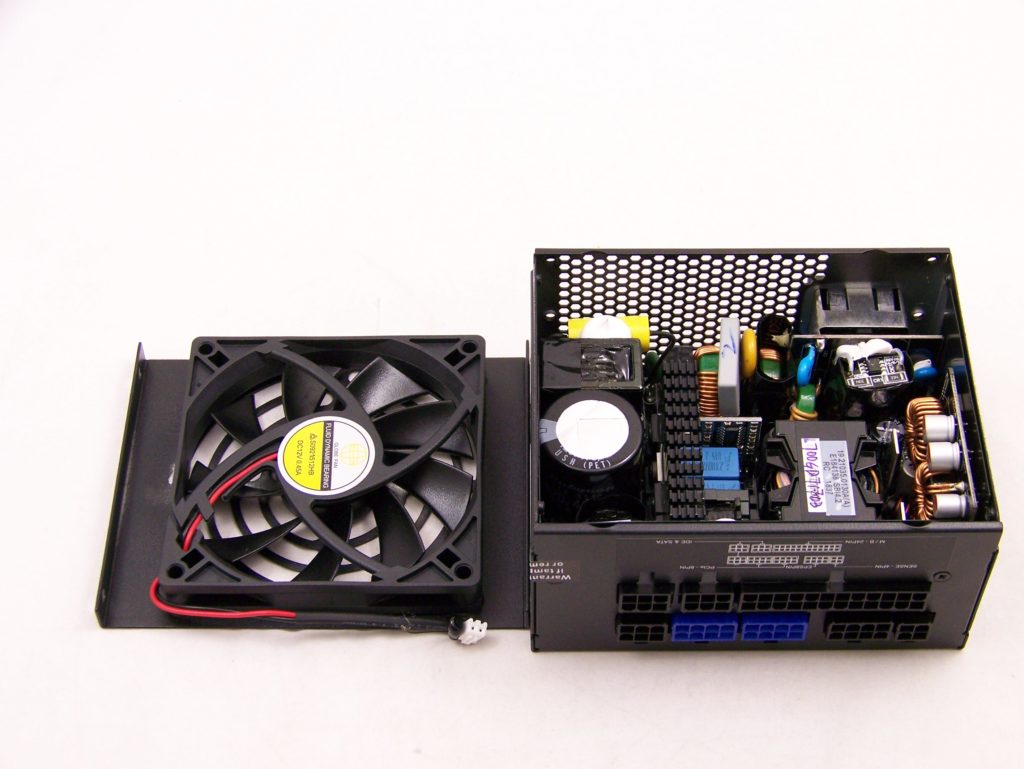
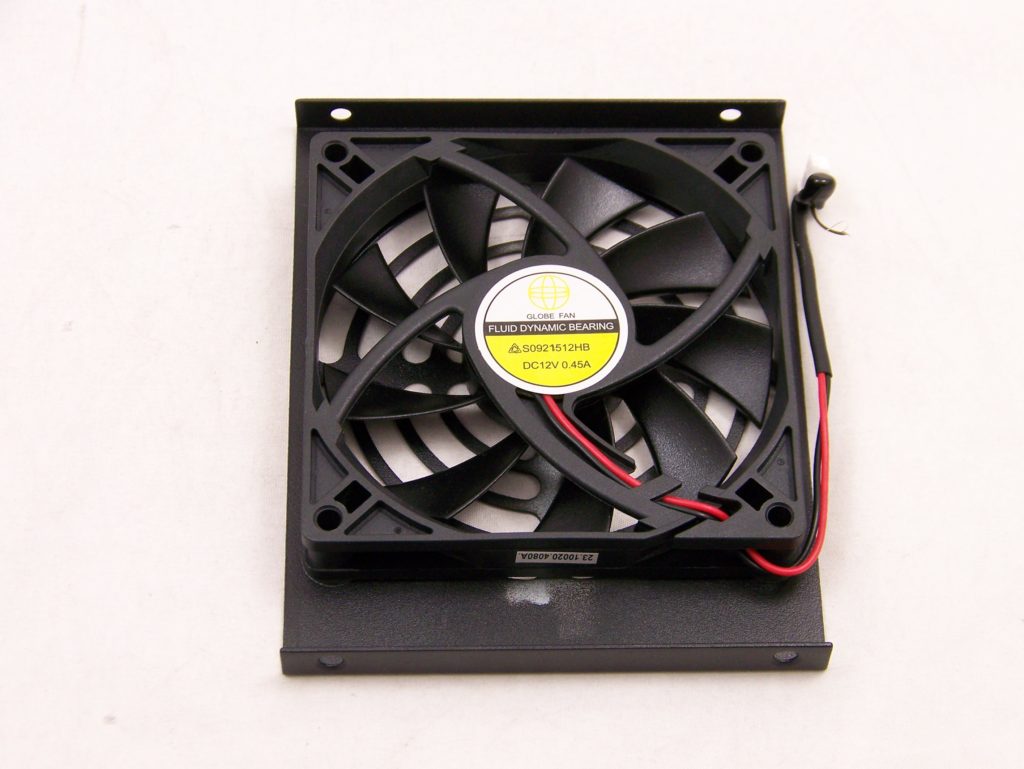
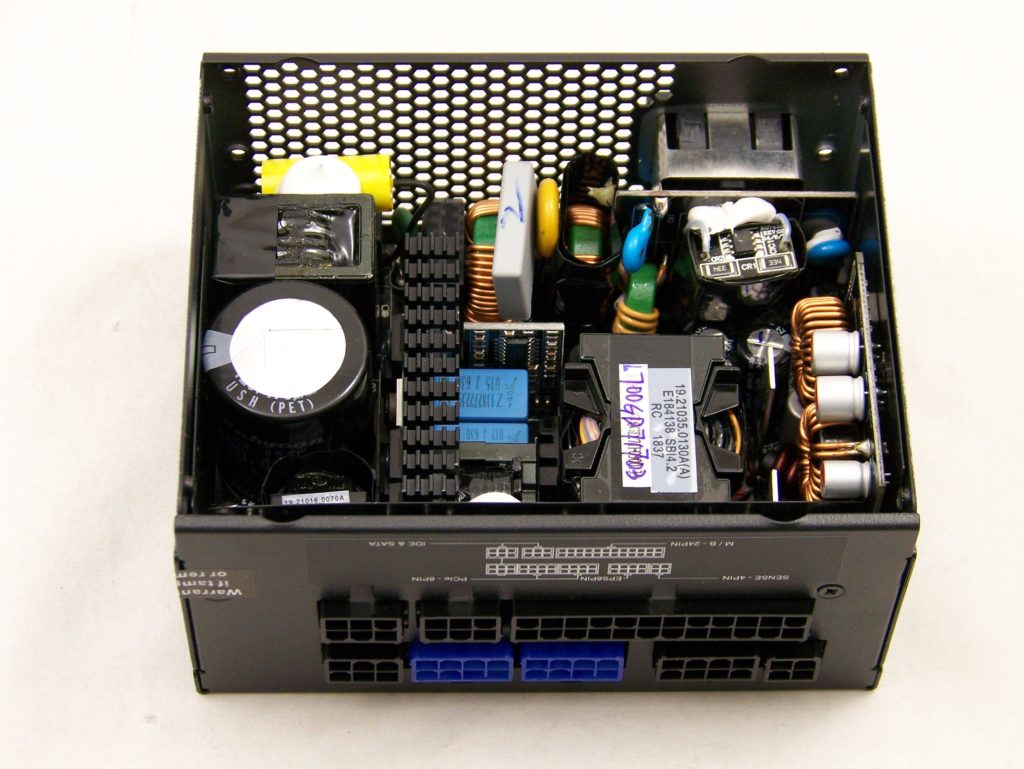
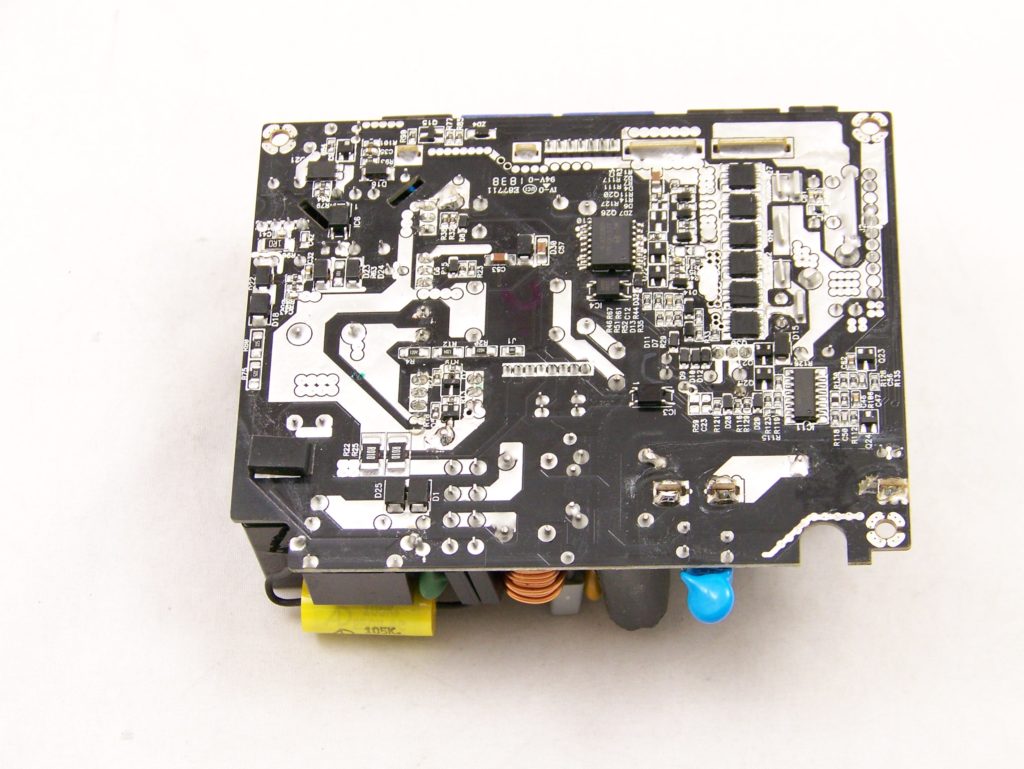
Once we open the top of the SilverStone SX700-G, we see a rather cramped unit. However, that is to be expected from a 700W SFX unit. The topology is a half-bridge resonant LLC primary with a synchronous rectification secondary and DC-DC VRM’s for the minor rails. The fan cooling this unit today is a FDB Globe Fan fan rated at 0.45A at 12v and it is paired with one large heatsink and two very small heatsinks. Lastly, the soldering is generally very neat which is not always the case with Sirfa built units.
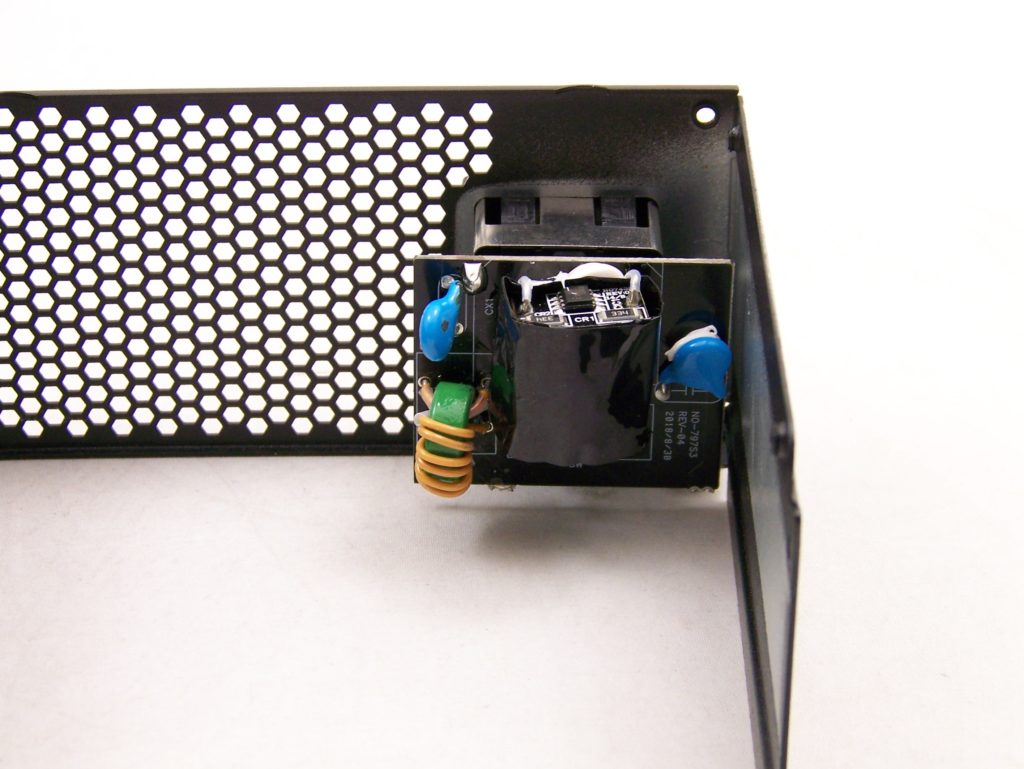
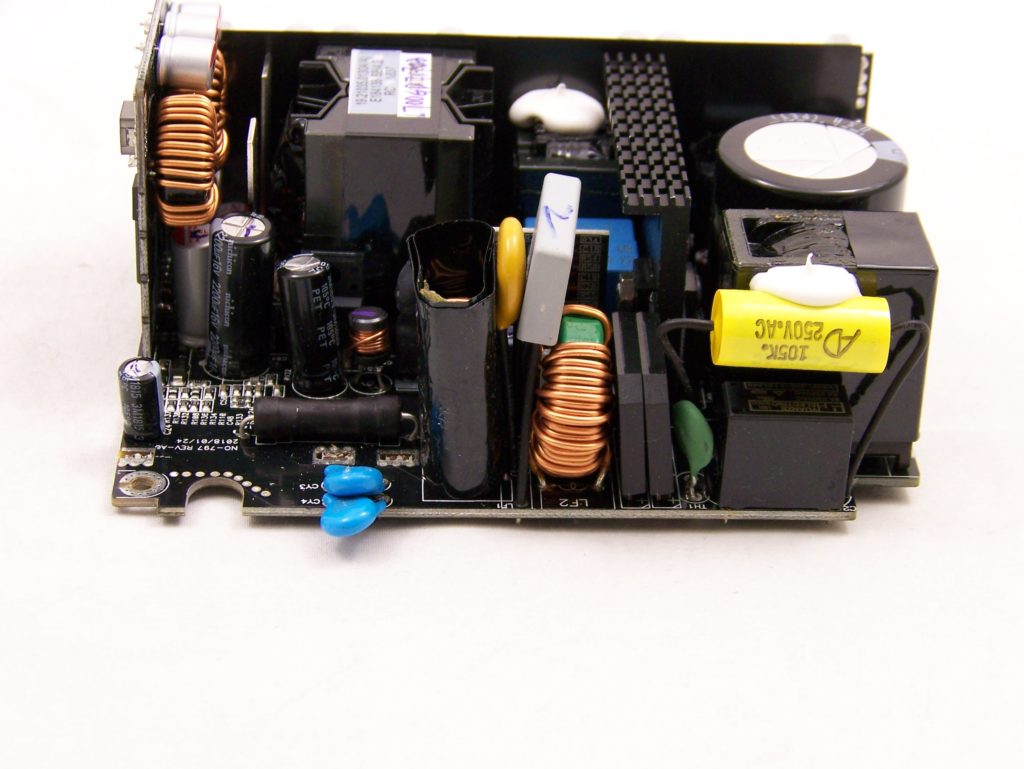
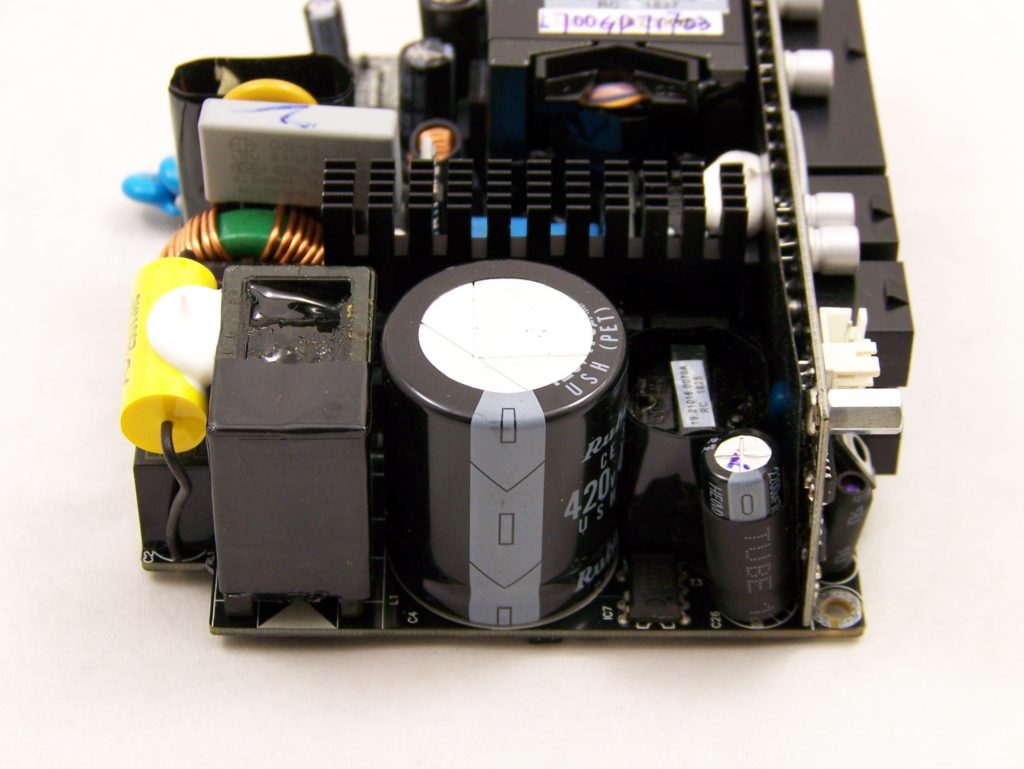
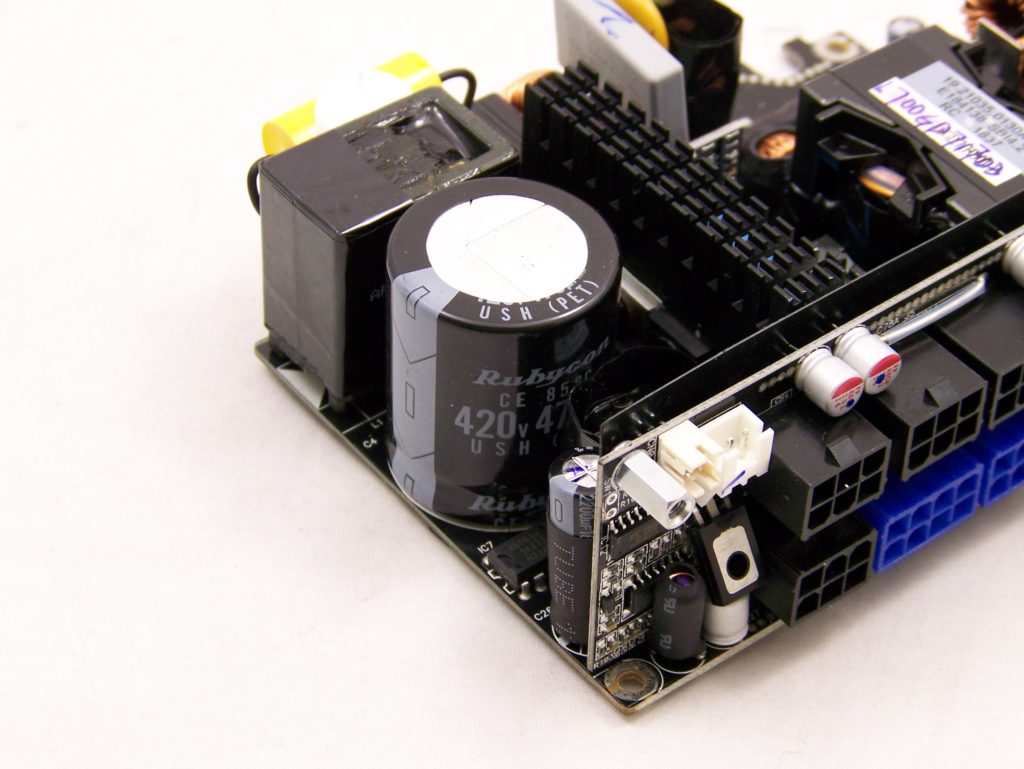
The SX700-G input filtering begins up on the housing itself where we find a PCB with some X capacitors and Y capacitors. The balance of the input filtering is found on the back edge of the main PCB. There are then a pair of bridge rectifiers next in line but they are not attached to a heatsink. The APFC coil is next and it is followed by the APFC power components and main switchers attached to the only substantial heatsink in the unit. Speaking of this heatsink, the main input capacitor is right next to it and is provided by Rubycon with a rating of 420v 470uF 85C.

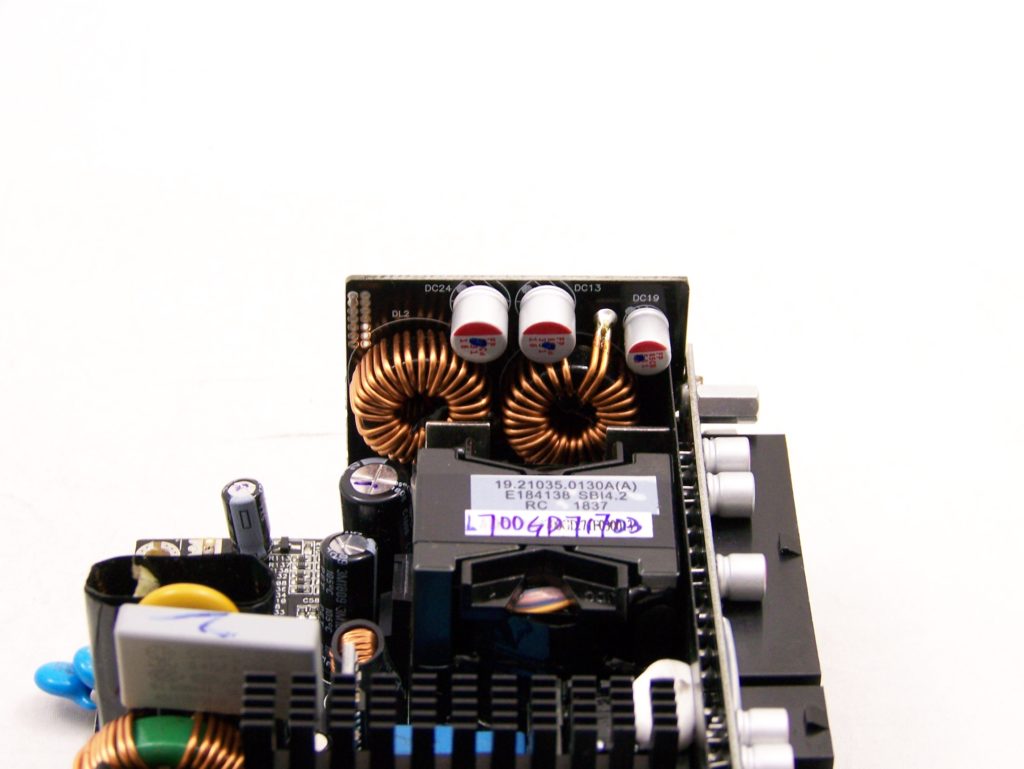

The secondary side of this unit looks like a little less crowded than the primary but that is only because the input filtering that was on the housing is not in the way as it was also attached to the main PCB here. In the middle of this area, we find the main transformer by a pair of tiny heatsinks. These heatsinks are used by the MOSFETs which are on the back of the main PCB and they use the case as a heatsink as well. Next to this, we find the DC-DC VRMs housed on their own PCB (populated by FPCAP solid capacitors) up against the modular PCB and edge of the main PCB. In front of these PCB’s, we find a few standard electrolytics provided by Nippon Chemi-con and Nichicon. The modular PCB construction looks very nice and there are more FPCAP solid capacitors here as well.
Build Quality Summary
Today’s SilverStone SX700-G is the first SFX power supply we have seen from SilverStone and the build quality looks very nice/excellent. This unit is obviously very small and it does lack any real “excitement” on the exterior of the unit save for the FlexFroce style cables. The integration seems to be very well done and the component selection is excellent as we see Rubycon, Nippon Chemi-con, and Nichicon standard capacitors as well as FPCAP solid capacitors today. We also see a FDB Globe Fan fan used in this unit. All in all, the SilverStone SX700-G is not the most visually striking unit we have seen, but it does seem to be well built where it matters. Let’s move on now to the load tests and see how this unit performs!
